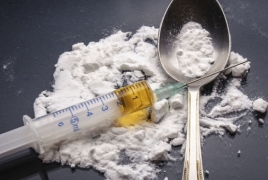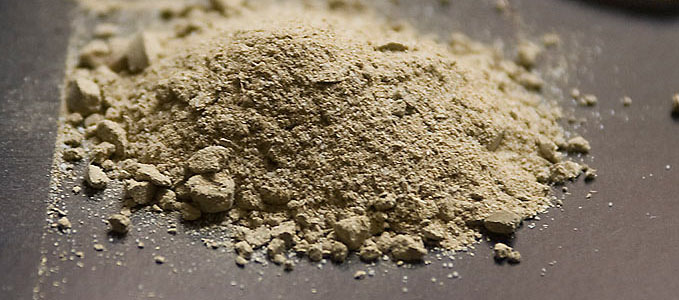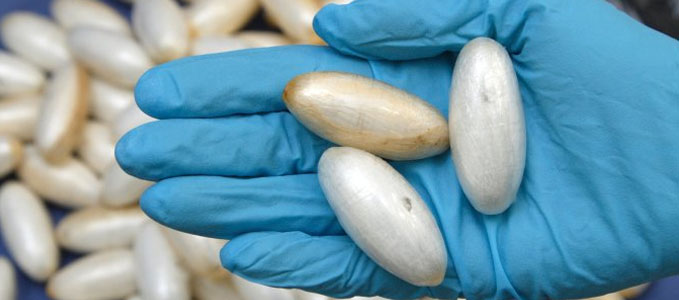
Heroin (like opium and morphine) is made from the resin of poppy plants. Milky, sap-like opium is first removed from the pod of the poppy flower. This opium is refined to make morphine, then further refined into different forms of heroin.
Even a single dose of heroin can start a person on the road to addiction. Many people experiment with heroin thinking, “I’ll try it once or twice. I can always stop.” But those who start down that road find it nearly impossible to turn back.

Heroin is sold as a white or brown powder, or as a sticky black substance known as "black tar heroin." Heroin that comes from Colombia tends to be brown and chalky. Heroin from Pakistan and Afghanistan is also brown. "Black tar" heroin, which is formed by an industrial process, comes to the U.S. from Mexico. It is not purified and is lower-grade.
Being highly addictive, heroin is used by millions of people around the world who are unable to overcome the urge to continue taking this drug every day of their live knowing that if they stop, they will face the horror of withdrawal, which includes extreme physical and mental symptoms which are experienced if the body is not supplied again with the next dose.
The longer someone uses heroin, how it was abused, and how much was taken each time will all be factors in how dependent the brain and body are on the drug. Therefore, the severity and duration of withdrawal will vary as well. The symptoms typically peak in severity within 48 and 72 hours after the last dose of heroin.

People who work as so-called "drug mules" transport illegal drugs from one country to another in extremely risky ways. In 2009, a 50-year-old woman attempted to transport a substantial amount of heroin into the U.S. by carrying it inside her body. To do so, she swallowed 50 pellets of packed heroin, each containing 12 grams of the drug.
Mild withdrawal symptoms are: nausea, abdominal cramps, tearing, runny nose, sweats, chills, yawning a lot, muscle and bone aches.
Moderate withdrawal symptoms are: vomiting, diarrhea, agitation, restlessness, tremors, trouble concentrating, goose bumps, and fatigue.
Severe withdrawal symptoms are: anxiety, insomnia, depression, hypertension, rapid heart rate, muscle spasms, impaired respiration, difficulty feeling pleasure and drug cravings.
Although it was first made from morphine in 1874, heroin was introduced for medical use in 1898 by The Bayer Company of Germany. Three years earlier, a chemist at Bayer was attempting to create a safer pain reliever that could be a substitute for morphine — one that was less addictive and also had fewer side effects. He accidentally synthesized diacetylmorphine, which he thought was a more dilute form of morphine, and he coined the term "heroin" for it, supposedly for its heroic qualities as a strong medicine. In the early 1900s, products containing heroin, such as cough syrups and remedies for infant colic, were marketed and sold over the counter in the United States and other countries. Doctors also reported that people who used these products seemed to sleep better. But within a few years, heroin was found to be two to three times more potent than morphine, and more rapidly absorbed by the brain. Physicians also quickly realized that heroin was even more addictive than morphine.
The effects on the body from continued use of this drug are very destructive. Frequent injections can cause collapsed veins and can lead to infections of the blood vessels and heart valves. Tuberculosis1 can result from the general poor condition of the body. Arthritis is another long-term result of heroin addiction.
The addict lifestyle—where heroin users often share their needles - leads to AIDS and other contagious infections. It is estimated that of the 35,000 new hepatitis C2 (liver disease) infections each year in the United States, over 70% are from drug users who use needles.

In the mid-1990s, there was a movement in fashion photography referred to as "heroin chic." It featured waif thin, emaciated fashion models, who looked in photos as if they were strung out on drugs. The look's other hallmarks included blank stares, dark circles under the eyes and pale skin.
According to the World Drug Report 2016, the number of people suffering from drug use disorders has increased disproportionally for the first time in six years in 2014, while the number of people who used at least one drug stayed at 5% of the adult population.
The report found nearly 250 million people between the ages of 15 and 64 used at least one drug in 2014. Although this figure has not grown over the past four years in proportion to the global population, the number of people classified as suffering from drug use disorders exceeded 29 million people, compared with 27 million in the previous report.
Additionally, around 12 million people inject drugs, with 14% of these living with HIV. The overall impact of drug use in terms of health consequences continues to be devastating.

